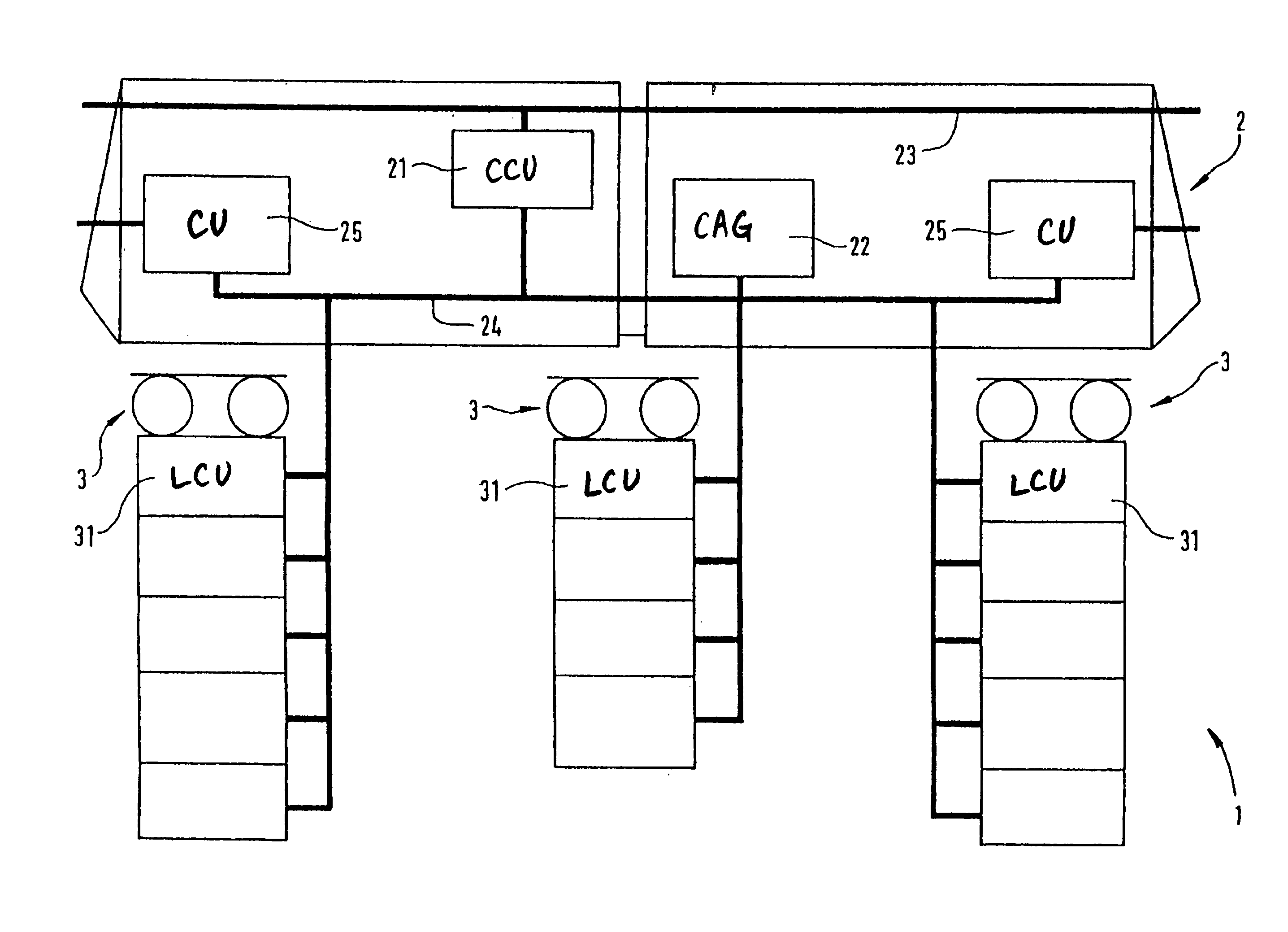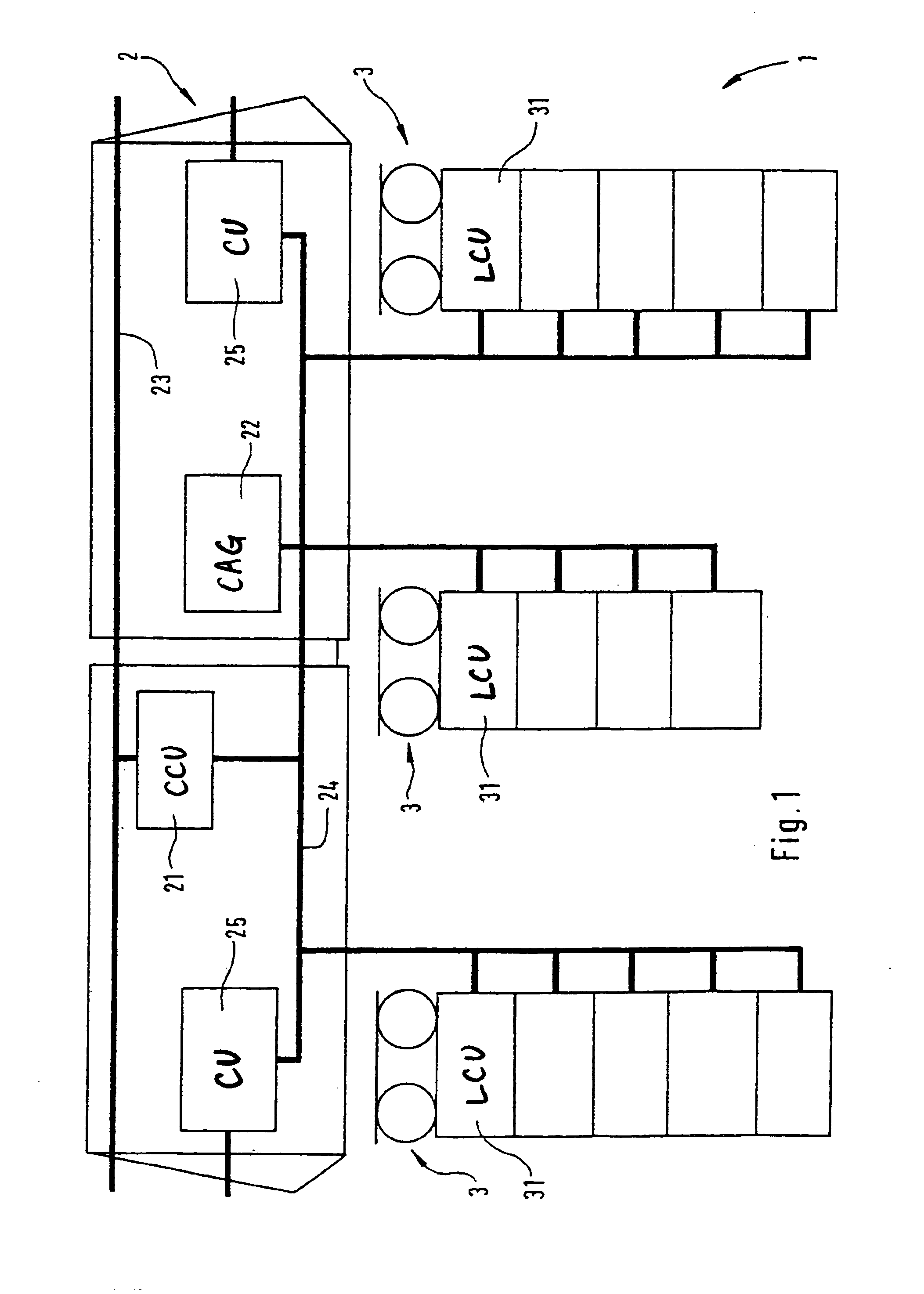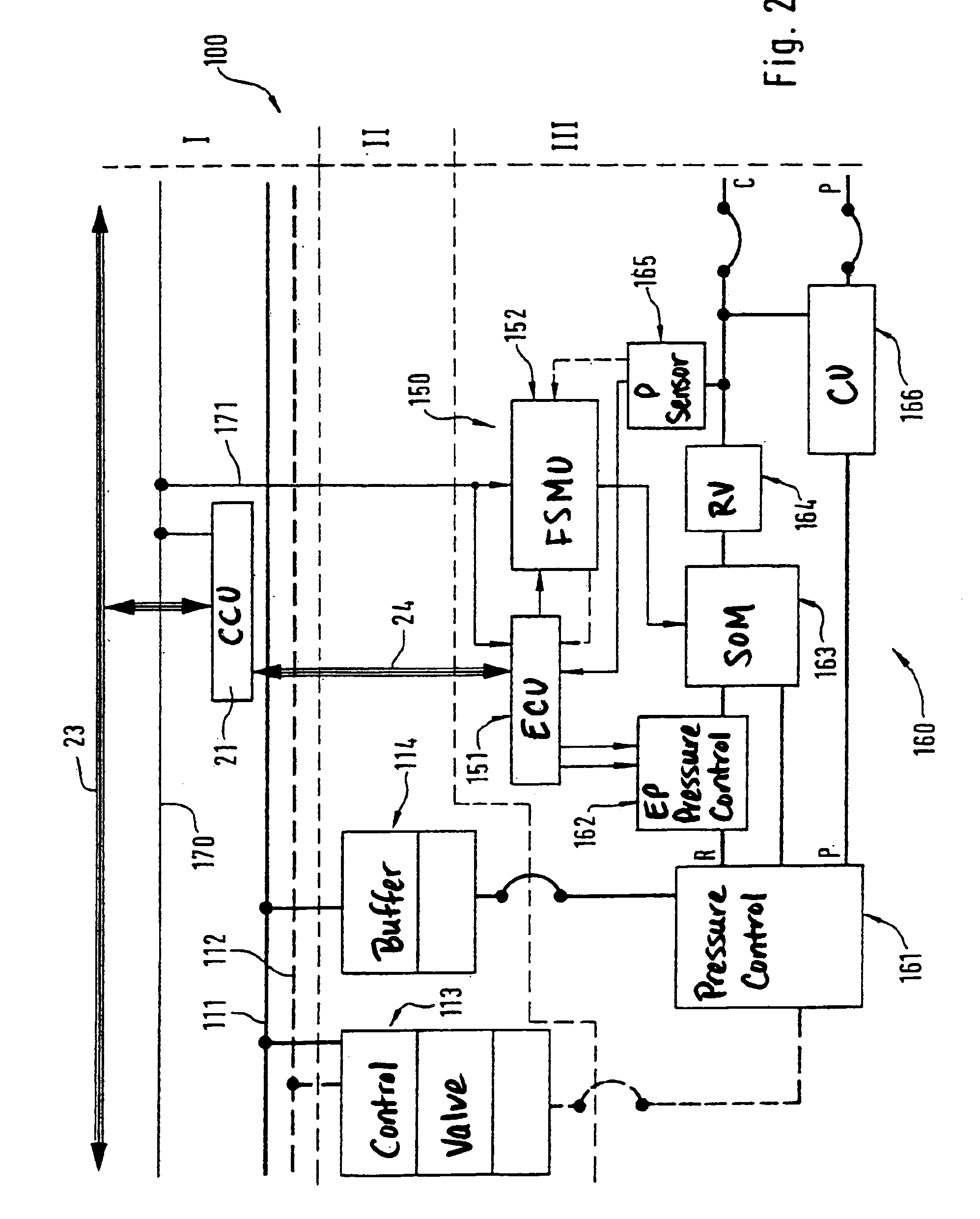Brake system for railway vehicles
a technology for railway vehicles and brake systems, applied in brake systems, brake action initiation, transportation and packaging, etc., can solve the problems of limited freedom of construction, heavy weight of pneumatic installations, and expenditures for mounting, and achieve significant logistic simplification, reliable and simple manner, and more space for other devices.
- Summary
- Abstract
- Description
- Claims
- Application Information
AI Technical Summary
Benefits of technology
Problems solved by technology
Method used
Image
Examples
Embodiment Construction
[0064]According to the schematic representation in FIG. 1, a railway vehicle 1 essentially has a vehicle body 2 and, in the present embodiment, has three bogies 3. The railway vehicle 1 is illustrated here as a traction vehicle, in which case additional driven or non-driven vehicles can be coupled for forming a train formation.
[0065]FIG. 1 illustrates the electronic controlling of the brake system of the railway vehicle 1. A central control unit 21 and a compressed-air generating device 22 are arranged in the vehicle body 2. By means of a vehicle data bus 23, the central control unit 21 receives operating data concerning the entire railway vehicle or the entire train formation. The control data for the brake system of the railway vehicle derived therefrom are transmitted by way of a braking data bus 24 to the air generating device and the local control units 31 and optionally also existing function modules in the bogies 3. By way of connection units 25, these data can also be transm...
PUM
 Login to View More
Login to View More Abstract
Description
Claims
Application Information
 Login to View More
Login to View More - R&D
- Intellectual Property
- Life Sciences
- Materials
- Tech Scout
- Unparalleled Data Quality
- Higher Quality Content
- 60% Fewer Hallucinations
Browse by: Latest US Patents, China's latest patents, Technical Efficacy Thesaurus, Application Domain, Technology Topic, Popular Technical Reports.
© 2025 PatSnap. All rights reserved.Legal|Privacy policy|Modern Slavery Act Transparency Statement|Sitemap|About US| Contact US: help@patsnap.com



